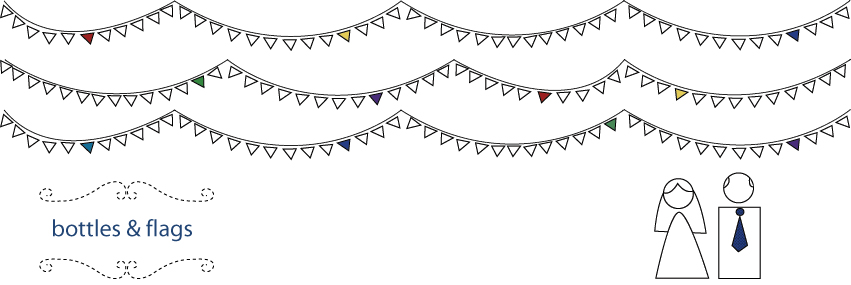I'm reading a book called, "All Dressed in White: The Irresistible Rise of the American Wedding," by Carol McD. Wallace. I'm a sixth of the way through and it's a totally enjoyable read. It's one of three books I recently bought talking about weddings and their history. It's a good place to rest the mind when it's not wondering if we can afford tables. (<--long story.)
It's also good for another reason. It's freeing. There's a feeling about how a wedding should be. I never realized what a force that was until there was a ring on my finger. It's something I was never aware of until that very moment of engagement. I find it fascinating and overwhelming and it's been good for me to be able to speak to it. (Or why you guys might start feeling I'm a broken record :)
What's freeing about Wallace's book is that it shows that weddings have changed. The component pieces have shifted and morphed. That the pressures to have a wedding a particular way isn't in fact built on a long history we have to somehow uphold. No. In fact all those things we are told we must have to make the day a wedding, are within the last hundred years, maybe even 10-50.
I must be in the dress chapter: White is a modern (relatively speaking) phenomenon and is probably thanks to Queen Victoria via the help of the printing press. It doesn't actually have anything to do with virginity but instead an English queen who dressed down for her wedding for political reasons. Middle class women use to wear black dresses because women would only have a few dresses and a black dress was what you had to have for funerals so people would own nice black dresses. You were expected to wear the dress again. Upper class women in the 1800s would have their wedding dresses redone slightly so they could wear it to uppity events. For awhile the bigger deal was what you wore after the wedding. The outfit you changed into for your travels. Also, there was a period where women would wear brightly colored gowns because it signified womanhood. If you were a proper young girl, you wore nothing but light pinks and yellows until you were married. Only married women were allowed (socially) to wear bright colors or jewelry flashier than a small strand of pearls.
Dear God I love this stuff.
So I'm not saying women shouldn't wear a $10,000 Vera dress on their wedding days. I'm saying they shouldn't feel like they HAVE to wear a $10,000 white Vera dress on their wedding day. And if they do wear one? Awesome. And if they don't? Awesome. And if it's anywhere between that and wearing one in your closet (that you will hopefully fit by Aug 14th, *cough*)? Awesome.
I think part of the power of weddings is this idea that they are based in big words like tradition and history when in fact they aren't. Not long history or long tradition anyway. And so we should feel free to either choose to follow what we want and skip the rest. And I will remind myself that in the future months (um 4) when I'm panicking that somehow our wedding won't be cool enough because it doesn't have all these things that I've grown up thinking weddings have to have to be a wedding. I will remind myself that not long ago, women got married in their family parlor with orange flowers in their hair and only family attending and then went off and ate cake the bride's mother had baked that morning.

Great post.
ReplyDeleteI want to read that book. Can I borrow it when you're done? It sounds fascinating!
You can borrow ALL THREE! :)
ReplyDelete